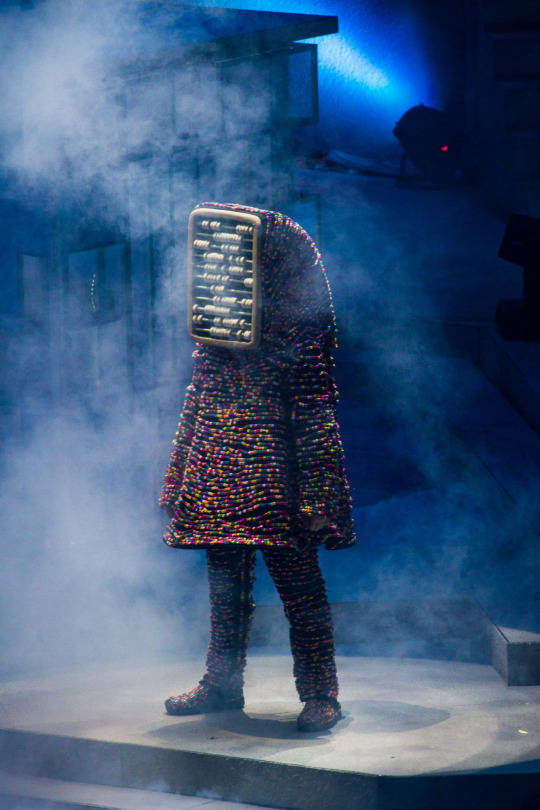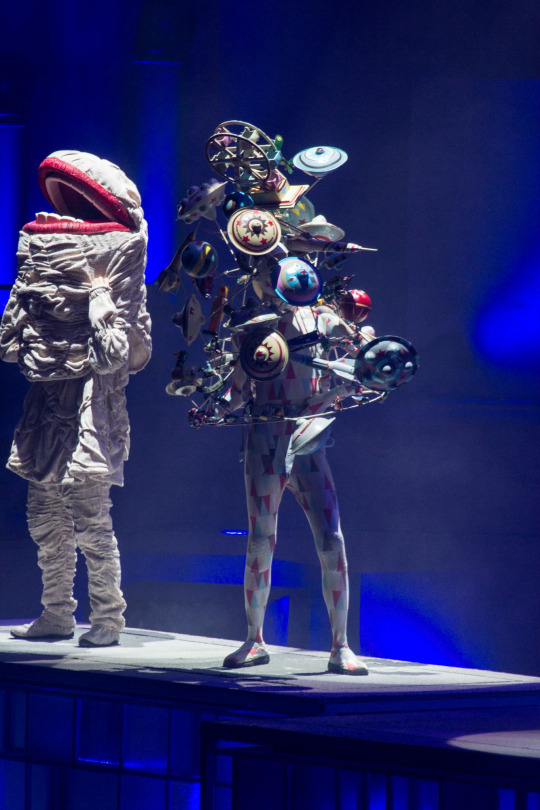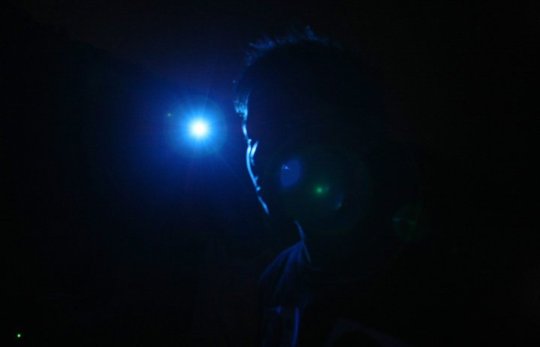Don't wanna be here? Send us removal request.
Text
Katrina Sluis
Katrina Sluis's lecture brings me into the question that perplexed me for long, which is 'what is real in the world today?' In the generation full of fake news and memes, how can we get away with fake news by everything fact-checked and stay in our beliefs? The internet culture (i.e. instants culture) rushed into the traditional art culture since the 1990s. The relationship between photography and reality became progressively blurry, as well as the relationship between conventional photography and contemporary art. Sluis claims that photographs on the internet are presenting a complete exploration of photography when the borderlines between truth and fiction, machine and human are increasingly questionable. The exhibition 'All I Know Is What's On The Internet' is an example of proving what Sluis mentioned. The show is presenting the data flow of how internet photos affect people's lives nowadays. It also demonstrated the role of photographers today when people are questioning the authenticity because they are suspicious with lots of photographs available on the internet every day. For instance, the click farm culture is significantly affecting the world on the internet. Fake news, as well as repeated news usually attract audiences with an eye-catching topic. People are addicted to the 'click farm' culture. Kneissl & Lacknern (2018) created the project 'Stop The Algorithm'. The device boycotted how the analysing data system collects information from the users, by parodying the work of 'click farms' and 'ranking manipulation employees. People usually widely perceive what is on the internet without thinking about the authenticity of the information. The best way to avoid getting fake information can be done by criticising its trustworthiness. When people are aware of the issue of 'click farm' culture and eliminate the information they think it is inappropriate, the internet culture will improve from time to time.
Bibliography:
Kneissl, S., & Lackner, M. (2018). Stop the Algorithm. London: The Photographers Gallery London.
0 notes
Text
Emma Philips
The practices of Emma Philips are based on her experiences and research studies. The essential concept of her works is about interacting with people. The works are predominately in black and white style, which is abstract and not easy to determine. Philips' work demonstrates the importance of research, which is like dwarfs on the shoulder of giants. I agree with this point of view as culture is develop based on historical factors. The relationship and power dynamic of photography are also one of the essential points of her practices. Philips always stand her role as a photographer, shooting with her subjects and not letting her subjects know her personality, which is as photographers always need to communicate with the subjects well to finish the photos. So, the question is: 'Will it be good that not let the subjects know about photographers' personalities during the shooting process?' I used to shoot with clients or models whom I did not personally know in the shooting process. It is hard to communicate with them as I need to bring them in the right emotion to present the right emotion to them as a photographer to get the final output. Empathy is needed to use in communication by using the similarity of emotion to guide them in what to present. It is base on my experience and personality, and I think it is essential for a portraiture photographer. Philips created her work with her empathy for understanding the subject's background. She mentioned that she learnt from Dorothea Lange's works that what an empathy gaze and show in her works. However, the works are showing only her point of view of the subject. They could not tell what is authentic of the subject's story. The viewers can only find the elements in the photos and decode to understand what is the background behind.
0 notes
Text
Hoda Afshar
Hoda Afshar is familiar in visual storytelling. She created her works based on the subjects' stories and breaking the stereotype and preconception of the others. Based on Afshar's background, which is an Iranian migrant to Australia. She found that the cultural differences between Iran and the Western world are immense; for instance, the reputation of Iran is danger in Western culture. She tried to create her works to show what means real from an Iranian in order to break the preconception. For instance, the series 'Under Western Eyes' (Afshar, 2014) shows the portraits of Islamic women in a way combined with western art symbols. The series aims to challenge the way the gaze of the westerner looks to Islamic people. The veil is traditional and significant for Islamic women; it is a device to keep men away from women. However, in western culture, a veil is not a device; it means mysterious and enticing. The preconception of the gaze on Islamic women is from orientalism. The symbolic elements of western art with Islamic women in the series brings out the concept which Afshar imply, being fashion-loving, rebellious and sexual-free in related to stereotype. So, the question is 'How stereotype affects people when they are viewing an artwork?' Stereotypes are base on colonial backgrounds, which shows the value of a cultural system. The colonial backgrounds rationalised how the stereotypes function. Afshar placed symbolic western art elements with Islamic women that brings the audience to think about what they had seen before, such as Andy Warhol, Mickey Mouse also Madonna Litta, which are famous in the western culture. She uses exoticism to combine these elements with Islamic women and created a vibe that similar to western culture. The reason is that she knows stereotypes can show how the contemporary art market manage.
Bibliography:
Afshar, H. (2014). Under Western Eyes. Melbourne: Edmund Pearce Gallery.
0 notes
Text
Lucas Davidson
The practices of Lucas Davidson are showing based on his experiences and feelings. The essential concept of his works is about 'water'. Water for him is a place of refuge, but also a terror which based on his childhood experience. Photography was not a part of his culture when he was young. After he accessed in camera and photography, he felt encountered because the primary trend of photography is analogue photography and the digital was still at the beginning. Davidson decided to develop digital photography as he thought that is anti-authority. I think his work is about breaking down the original materiality and turn the images into new things. For instance, the photo series 'Limbo' (Davidson, 2013) shows that the original photos with his family and turn them into different materials and create new works. It shows layers and different perspectives of his family members' body, but not showing the entire body. The work makes the audience seeing the whole body but not only a body. As Davidson told, he was in the flow experience in the process of creating his works. Also, his works make the audience slow down the viewing process. Photography is something temporal as we can only capture one moment once. So, here is the question: "How can we show the process of temporality in photography?' Davidson's works are guiding the audience to slow down the viewing process. For instance, the work 'I am a Strange Loop' (Daivdson, 2017) shows a configuration of mirrors. Audiences can see parts of their body in the reflection but not a whole body. The work makes the audience try to understand the meaning behind by changing the perspectives of the fragmentation. The methodology of Davidson's work is showing the process of ephemerality in a post-photography way, but not showing one entire image.
Bibliography:
Davidson, L. (2013). Limbo [Video]. Sydney: Dominik Mersch Gallery.
Davidson, L. (2017). I am a Strange Loop. Sydney: Dominik Mersch Gallery.
0 notes
Text
Gerwyn Davies
Gerwyn Davies's practice is about the reconstruction and deconstruction of materials. It is based on fashion; he uses different materials to create various staged scenes. His artwork covers distinguishing subcultures and challenges these norms. I found some surrealness in his works, and I think these are interesting for me. Also, the bright colours he uses are imaginative and fantasy. The punctum in his works is compelling. For instance, the series of the artwork 'SUBTROPICS" (Davies, 2016) shows he uses specific materials and colours to imitate the object in the background. Furthermore, the lighting that he presents in these staged settings makes the final images stronger. According to Davies's sharing, I would like to state a question: "What is the relationship between the character in the final output and the society?"
In most of Davies's works, he predominately uses bright colours and different materials to the identity of subcultural society. For example, Davies uses materials to create the costumes and hide his face in each final photo. By hiding his face, he makes the audience focus on what he wants to present, which is the distortion of the body and how the materials adorn his figure.
By having Davies's sharing, I remember the first time I had Nick Cave's work that I bought a concert in Hong Kong in 2013. I was interested in those costume even I did not know who the designer is.




I think both Davies and Cave's works have the same characteristic that they challenge the racial and identity issues by the costume that allows the body to act as free as the wearer want to. However, Cave's works are mainly based on audible noise that the wearer of the costume can make.
Davies’s practices are unusual, that brings me to think about how to present ideas with different materials and costumes as an answer to my own cultural identity.
Bibliography:
Davies, G. (2016). SUBTROPICS [Photographic prints]. Brisbane: Spiro Grace Art Rooms.
0 notes
Text
Salote Tawale
Salote Tawale's practice is about decolonisation and cultural identity. As her background is an Australian, but she was born in Fiji. As an Australian Fijian, she felt colonialism affected severely in Australia, and she would like to bring out the concept of decolonisation and some cultural differences in colonial society. Her artworks predominately present Fijian culture with multi-media installation. For instance, her work 'Burebasaga Marama' (Tawale, 2017-2018) linked with her own experience with her grandmother and Auntie, who are Fijian. The artwork was presented in installation and showed the Fijian culture in Australia.

Figure 1. Burebasaga Marama (Tawale, 2017-2018)
The artwork attracted me as it is showing not only the relationship between Tawale and her relatives but Fijian family culture as the only Fijian culture for me is only about rugby. I would like to state a question: 'How crucial personal identity is when people are out of their homeplace and living in other countries with different culture?'
I was born and raised in Hong Kong. As a Hongkonger living and studying in Australia, I feel what the identity issue Hong Kong people is facing. Some of my friends got their citizenship in Australia. However, it seems the Australian society does not treat them as an Australian as they are Asian. I think it is about the cultural background also the reputation of Asian upon Australian. As well as Tawale's practices, I think it is essential to respect other's culture and study deep in different cultural systems. Tawale's practice brings me about the identity of Hong Kong people as Great Britain ruled us for 156 years. As a former colony of British, our cultural background and value are different from people in China. So it is hard for us to say that we are Chinese as the reputation of China is not as good as people think.
Bibliography:
Tawale, S. (2017-2018). Burebasaga Marama [Installation]. Melbourne.
0 notes
Text
Samuel Hodge
Samuel Hodge's practice is about connection. The methodology he used in his artworks were predominantly about retelling stories by reinterpreting archives to new artwork. I like the artworks which linked him and David Wojnarowicz. According to his sharing, the artwork was related to Wojnarowicz's diary. Pursuant to Hodge's sharing, I would like to state a question that: "How essential is tracing back on others' archive and self works as well as affect Hodge for his work?" The essential point from Hodge's work for me is he traced back to archives and linked with Wojnarowicz's diary. He found the difference between the archive and Wojnarowicz's biography and turn them in an installation. Besides retelling a story, I think he was completing the story. Also, by the experience of him in Paris, he linked again with Wojnarowicz and created another artwork. The relationship between Hodge and Wojnarowicz is just like a cycle and affecting Hodge. Furthermore, Hodge’s works are not individual artwork but linked with each other. They are in the cycle of self-experience and look back to old works to create a new work. I think it is crucial for me that tracing back to the old works and combining them with my new experiences. After Hodge's sharing, I tried to review my old works in these ten years. I found that there are some images that suitable for now. As we are in the situation that the city has been lockdown, and everyone is isolated with each other.

Figure 1: Untitled (Lam, 2010)

Figure 2: Untitled (Lam, 2013)

Figure 3: Untitiled (Lam, 2018)
These self-portraits were some general photographic practices; however, when I was tracing back to these images, they bring me a different inspiration, then I can make them in one collection to present the feeling of isolation.
It is essential that Hodge’s sharing encouraged me to reconnect to my old works even I thought those works are simple and not related to each other.
Bibliography:
Lam, C. (2010). Untitled [Digital Image]. Hong Kong.
Lam, C. (2013). Untitled [Digital Image]. Hong Kong.
Lam, C. (2018). Untitled [Digital Image]. Hong Kong.
0 notes
Text
Yvette Hamilton
Yvette Hamilton's works are predominantly based on early photographic techniques.
She focuses on the concepts of appearance and disappearance, and her works serve as a reminder to me on what the primary forms of photography are specifically the use of photographic paper and the darkroom. For example, the artwork ‘Survey and Blind Survey’ (Hamilton, 2019) shows the outcome of the light recording of a black acrylic box with LED lighting and coal dust. The artwork is similar to the process in which we produce photograms in the darkroom. Hamilton uses the early photographic techniques (darkroom and photogram, negatives) in a majority of her work, demonstrating the intrinsic links between time and space.
Another work that utilizes this approach is ‘Luminous Capture’ (Hamilton, 2019). It presents the movement of the waves and the light of the lighthouse. The artworks illuminated these elements with a sparkling LED lightbox, which showed the waves in the installation. The installation showed the relationship between appearance and disappearance, which is a reoccurring theme in her practice.
Hamilton's work reminds me of the ongoing project ‘Desiccated Prints’ by the Optics Division Team from Metabolic Studio in Los Angeles, USA.

Figure 1. Desiccated Prints (Metabolic Studio, n.d.)
The team made the prints by installing photographic materials under shallow ponds in museum and galleries. After water evaporation, there are mineral traces left on the surfaces and lower the quality of the images. The final outputs bring out the concept which the team wants to show how the desiccation of lakes in the aired west in Los Angeles.
Upon viewing both artists, Yvette and the Optics Division's works appear similar as they are using early photographic practices. Also, they are showcasing what can or cannot be seen. In my opinion, disappearance is abstract and how to turn disappearance to appearance is confusing. As my former background is in commercial photography, it is challenging that having a different perspective to make portraiture photography and landscape photography.
Bibliography:
Hamilton, Y. (2019). Luminous Capture [Inkjet print from lumen print mounted on alupanel]. Sydney: Wellington st projects.
Hamilton, Y. (2019). Survey and Blind Survey [LED lights, acrylic, custom frame and coal dust, Unique silver gelatin photograms]. Sydney: Verge Gallery.
Metabolic Studio. Desiccated Prints [Photographic prints with mineral traces]. Los Angeles.
1 note
·
View note